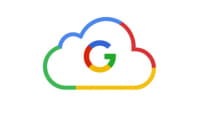
We build what’s next — and rescue what’s worth saving.
Building momentum for apps and teams that need a second wind, at Sentu, we turn struggling projects into launch-ready products.
Launch your project nowSystem.out.println("
GraphDBGraph AIEnterprise SearchAI-Powered Intelligence
");
Code. Clarity. Comeback.
At Sentu, we specialize in turning complex problems into clean, scalable solutions — without the drama. We design, build, and deploy intelligent software that helps companies innovate faster, operate smarter, and scale confidently. From concept to production, we bring clarity, precision, and measurable results to every software projects and AI initiative.
Capabilities
Core Development
Custom Software Development We create tailor-made systems that solve complex business challenges and unlock new efficiencies. Machine Learning & Deep Learning Solutions From predictive analytics to computer vision and natural language models — we design, train, and deploy high-performance algorithms. Integration Seamlessly integrated into your existing tools, platforms, or workflows to elevate performance and insight. Automation & Intelligent Workflows We automate the repetitive tasks so your team can focus on what matters — innovation and growth.
Design Implementation
Ideation and iteration are the foundation of our design lifecycle. From our wireframing process, to delivery, we design every screen from login to logout. Alongside your brand guidelines we match each button, paragraph, and icon down to the pixel. MLOps & Deployment Automation We help teams scale with seamless deployment, monitoring, and updates. Cloud AI Solutions (AWS, Azure, GCP) Leverage the best of cloud-native to build reliable, secure, and cost-efficient systems.
AI-Powered Products
Chatbots & Conversational AI Deliver smarter, faster, and more natural customer interactions through intelligent virtual assistants. Recommendation Engines Drive engagement and sales with personalized product, content, and experience suggestions. AI Copilots & Generative Tools Build your own custom copilots, text generators, or creative assistants for any workflow.
Consulting & Strategy
AI Strategy & Transformation We guide organizations through every stage of AI adoption — from readiness assessment to full rollout. Proof of Concept (PoC) Development Validate your AI ideas quickly with a targeted, measurable prototype. AI Governance & Ethics Ensure transparency, fairness, and compliance in all your systems and decisions. We help single points of failure and unnecessary complexity.
Technologies































Beyond Coding..
Every team has a different story, some teams came to us with urgent issues. Others just needed a steady hand. These are stories of momentum regained and progress made.
We are here!
Have a project that needs help?
Tell us what's going on. We'll figure it out together.
Drop us a line
Wondering how far your software can go? Fill out the form below to get started on your dreams. We’ll work with you to make it happen.